Scroll down the page for more details or click an icon to jump straight to that particular series.
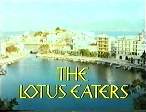
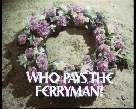
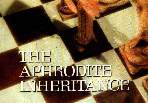
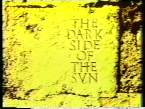
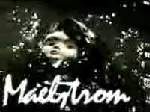
In 2001 it would have been impossible to open a newspaper or magazine
and not read of Louis de Berniere's Captain Correlli's Mandolin and
its impact on the island of Kefalonia
- which it catapulted overnight into a major tourist attraction.
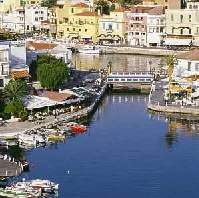 Thirty years earlier Michael Bird caused a similar
sensation on Crete in the small town of Aghios Nikolaos, setting for his first
creation The Lotus Eaters (1972).
After the series was screened the number of
British visitors to the town reportedly increased by 180 percent.
Thirty years earlier Michael Bird caused a similar
sensation on Crete in the small town of Aghios Nikolaos, setting for his first
creation The Lotus Eaters (1972).
After the series was screened the number of
British visitors to the town reportedly increased by 180 percent.
The Lotus Eaters was a collection of powerful, often tragic, dramas about a group of British expatriates living on Crete. Each story was skilfully woven into a continuing sub-plot about the faltering marriage of principals Erik and Ann Shepherd (played by Ian Hendry and Wanda Ventham). As one character put it "You are running away from something, all of you. A cosy little foreign community huddled together in the sanctuary of a Mediterranean island. Why else would you all be living here 1,000 miles from home?" As the series unfolded it became apparent that no one was what they seemed. The show proved immensely popular and Bird's reputation assured.
A second series quickly followed - a single six-part story developing and extending the espionage sub-plot centred on the Shepherds. It marked the start of a prolific and profitable partnership between Bird and the BBC that was to last over ten years and take viewers on exotic adventures to Crete, Cyprus and Rhodes. Following each series tourism soared at the location and Michael Bird became to Mediterranean islands what Delia Smith was to become to obscure cookery ingredients ... more
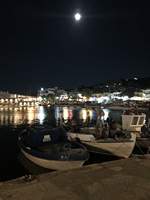
Bird's next creation, Who Pays The Ferryman? (1977) was developed with artistic and financial assistance from the Greeks. It was again set on Crete, not far from Aghios Nikolaos in the town of Elounda. International "co-productions" were increasingly important to the cash starved BBC and Bird negotiated similar deals with the host country for each successive venture.
Writing on The Lotus Eaters had been shared with a handful of established BBC writers, but in future Bird would write all the scripts himself. In Who Pays The Ferryman? he turned in another powerful drama charged with emotion. Its underlying theme - the tensions between the old Cretan traditions and the modern world - was a rich source of conflict, and conflict is the essence of good drama.
The overarching story of an old-woman's "vendetta" was in every sense a Greek tragedy, and harking back to the first series of The Lotus Eaters Bird managed to weave in an additional tale or two along the way ... more
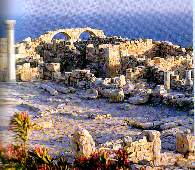
Bird had cut his teeth on spooky series like Journey to the Unknown (1969) and Out of the Unknown (1971) so it was perhaps inevitable that metaphysical elements began to creep into in his work. Superficially his next offering was a mystery thriller in the Paul Temple mould. (Bird had also written for the Francis Matthews' Paul Temple series in the early 70s.)
Set, this time, on Cyprus The Aphrodite Inheritance (1979) was a heady brew of murder, mayhem, mystery and double-dealing with hero David Collier lead a merry dance as he tried to unravel the truth behind his brother's death. Inexplicable appearances and disappearances left Collier doubting his own sanity, and the ending (which we won't spoil here) left some viewers feeling the same ... more
For The Dark Side of the Sun (1983) Bird
switched location to Rhodes.
This time it was clear from the outset that dark forces were at work.
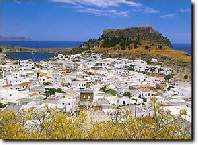 Villain Raoul Lavalliere (Peter Egan) had the ability to cloud minds
and to take on the form of another person - specifically that of photographer
Don Tierney (Patrick Mower). It was a handy talent and one that enabled Mower
to appear throughout the series even though his character was killed in the
first episode! Lavalliere uses his power to bed Tierney's widow leaving her
believing her husband has returned. If it sounds vaguely sordid, it was, and
Egan's flawless portrayal of pure selfish evil was one of the highlights of
the series.
Villain Raoul Lavalliere (Peter Egan) had the ability to cloud minds
and to take on the form of another person - specifically that of photographer
Don Tierney (Patrick Mower). It was a handy talent and one that enabled Mower
to appear throughout the series even though his character was killed in the
first episode! Lavalliere uses his power to bed Tierney's widow leaving her
believing her husband has returned. If it sounds vaguely sordid, it was, and
Egan's flawless portrayal of pure selfish evil was one of the highlights of
the series.
The Dark Side of the Sun was very atmospheric and made excellent use of the spectacular location but it inexplicably ran out of steam at the end, almost as if Bird had planned eight episodes but partway through had been told it had to stop at six ... more
 After the gods and the devil where does a writer go next? The answer,
strangely, was Norway. Forsaking the Mediterranean Bird set his final
BBC series in the Norwegian fjords and
the beautiful town of
Alesund.
After the gods and the devil where does a writer go next? The answer,
strangely, was Norway. Forsaking the Mediterranean Bird set his final
BBC series in the Norwegian fjords and
the beautiful town of
Alesund.
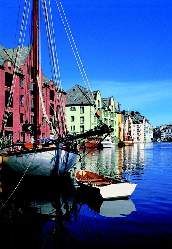 series Journey to the Unknown some years before and
had received joint writing credit with Bloch on one episode.)
Maelstrom had all the ingredients -
the crazy woman locked in an upstairs room, mysterious comings and goings in an empty house,
a "bad" bloodline, a creepy collection of dolls and a
crippled old lady who knew more than she was telling.
series Journey to the Unknown some years before and
had received joint writing credit with Bloch on one episode.)
Maelstrom had all the ingredients -
the crazy woman locked in an upstairs room, mysterious comings and goings in an empty house,
a "bad" bloodline, a creepy collection of dolls and a
crippled old lady who knew more than she was telling.
Bird spun a fair yarn, and it reads well as a thriller, but the series was criticised for being too slowly paced and for overdoing the Norwegian locations. The nature of British television had changed. The eighties viewer alternated between glitzy escapism in the likes of Dallas, Dynasty and Miami Vice, and earthy realism exemplified by the new Channel 4. The success of Brookside inspired the BBC to create Eastenders (which debuted on the same evening as episode three of Maelstrom). Meanwhile Bird formed an alliance with Yorkshire Television and his output shifted to suit the new mood. He created gritty northern dramas, one about a provincial newspaper and a tale of two brothers jostling for control of the family motor business. We got no more flights of fancy and television became the poorer for it ... more